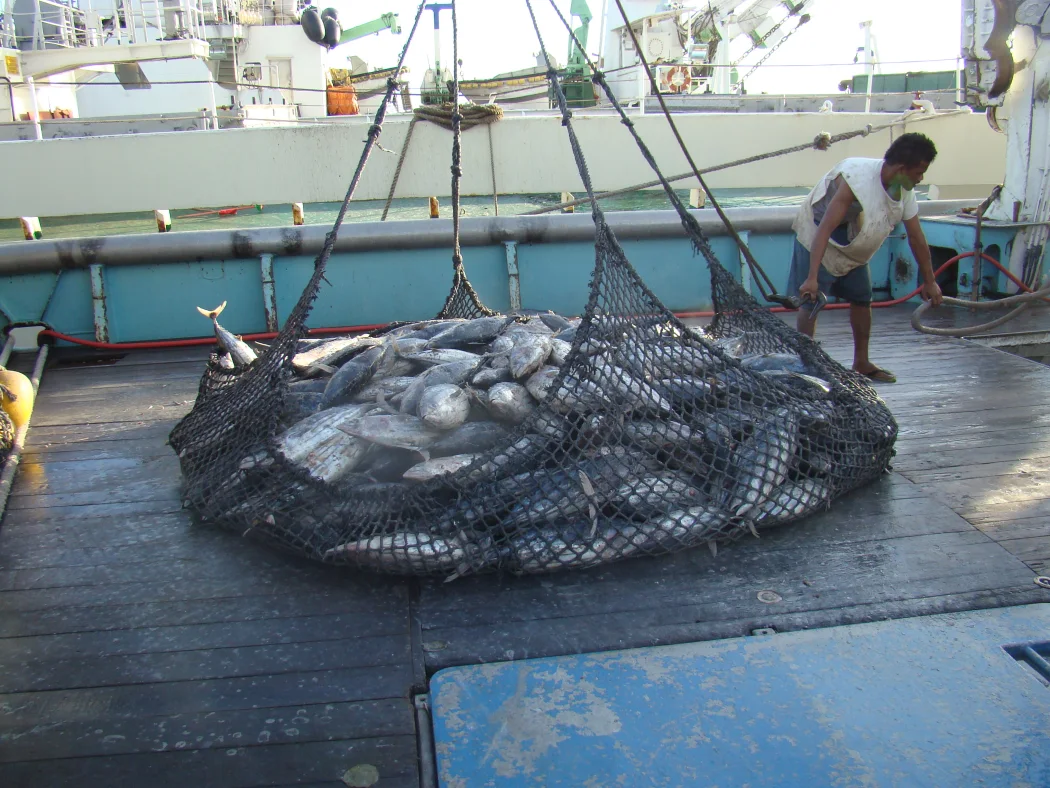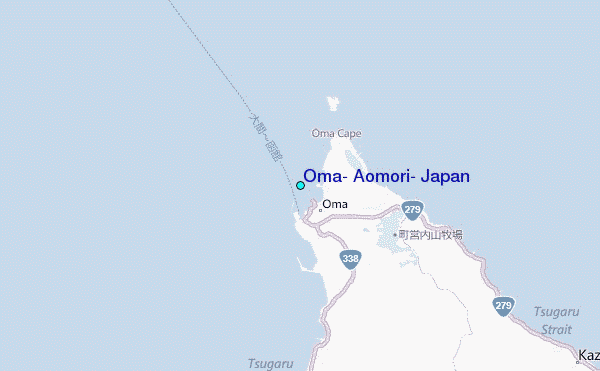

Commercial Fishing for canned tuna – Purse Seine
Commercial fishing of tuna is a very important industry as canned tuna is a staple in many countries while high valued bluefin tuna, big eye tuna is also in high demand in the market.
The demand of tuna whether canned or frozen is constantly increasing. Commercial fishing for canned tuna is usually done by Purse Seine fishing.
The target of the Seine Fishing is to capture as much tuna as possible. With the mother ship, about 3~4 additional escorts with sonars and radars would spread out in the ocean to search for tuna schools.




The main target is the skipjack tuna and yellowfin tuna. The mothership would use a huge net with the information collected while the escort ships would lure the tuna school into the net. Fishing nets are as huge as 1,500 to 2,000 meters in length and 120 to 250 meters in depth in general.
Storage and transport ships would then visit the mother ship once the haul is full while the mother ship continues fishing operations for even months in the ocean.




Commercial Fishing for high value tuna – Longline Fishing
Bluefin tuna and big eye tuna that have much higher values than the tuna usually used for cans are mostly caught by longline fishing to prevent as much damage as possible.
Fishing with huge nets damage the fish that harms the market value for such high valued fish so longline fishing is preferred for higher valued tuna species.




Long line fishing would place bait on several feet or meter spaces with squid, mackerel, herring etc any kind of fish that tuna feeds on.
Tuna quickly deteriorate right after they are caught so the guts are quickly removed and the tuna is frozen in at least -60℃ freezing environment.
If possible for bluefin tuna, some are kept refrigerated if they could be distributed to the market early as refrigerated bluefin tuna cost at least 2~4 times more expensive than frozen tuna.


Oma – Japan’s most famous bluefin tuna and fishing methods for high quality tuna
The city of Oma of Japan is known for high quality wild caught bluefin tuna. The most expensive bluefin tuna, the Ichiban maguro of 2019 was a wild caught bluefin tuna from Oma. Oma is located on the Shimokita peninsula near the Tsugaru Strait.
To catch and preserve high quality bluefin tuna the kuro maguro or the honmaguro, Oma fisherman catch bluefin tuna by single line fishing called いっぽんづり [一本釣り] Ipponzuri or long line fishing to minimize damage of the bluefin tuna.




Fisherman even utilize special tools to drain as much blood as possible (draining blood is most important for high quality bluefin tuna) and even electric taser guns.
The fishermen would use the electric taser guns to shock and paralyze the bluefin tuna as soon as possible so the bluefin tuna wouldn’t lose its valuable fats.



Fishing Industry of Bluefin tuna of South Korea
As of 2025, due to the rise of the ocean temperature, bluefin tuna has started to migrate even to the East Sea of South Korea.
Only mejimaguro that means young bluefin tuna were caught in the oceans of South Korea, however now huge, good quality Pacific bluefin tuna are often caught in the oceans of South Korea.
Yet South Korea still doesn’t have the infrastructure nor proper gears to this sudden jack pots that emerged in the East Sea.


Processing of bluefin tuna is crucial for its market value so although bluefin tuna catch has significantly increased in South Korea, they aren’t properly processed yet to reach market.
National Fisheries Research & Development Institute of South Korea even discovered large nesting grounds in the East Sea of bluefin tuna.
Fish become the most fat and rich of flavor right before their spawning season.


As the largest tuna market Japan is right adjacent to South Korea and the tuna population is increasing in the East Sea year by year, the bluefin tuna market of South Korea will become a gold rush.
Even the quota for bluefin tuna in South Korea soared as of 2025. Yet, as of 2025, there isn’t a cutting-edge company that can take this market.


Why it is difficult to maintain high quality bluefin tuna – bluefin tuna are endothermic
Bluefin tuna is endothermic, thus warmblooded unlike other fish species. Thus, in default, all cells of the bluefin tuna tend to maintain their body temperature while other fish species don’t have cellular mechanisms to increase their temperature.
ectothermic animals for example crocodiles and reptiles could stay dormant in the winter and they could slow their metabolism depending on the environment.
This is impossible for endothermic animals like tuna and even humans. Like 3℃ increase of body temperature is lethal to humans, bluefin tuna are very sensitive to temperature.




Why it is difficult to maintain high quality bluefin tuna – High Unsaturated Fat Content
Bluefin tuna is full of EPA(eicosapentaenoic acid) and DHA(docosahexaenoic acid) omega3-fatty acids and other unsaturated fats. Unsaturated Fats or carbohydrates are highly reactive to oxygen thus, they are susceptible to oxidation.
Especially for tuna, EPA and DHA have multiple double bonds in their long carbon chains, thus they are highly susceptible to oxidation as well.
The double bonds of unsaturated carbohydrates and fats are very electron rich and the bond itself is a pi (π) bond, that is weaker than a single bond a sigma (σ) bond.




Why it is difficult to maintain high quality bluefin tuna – Bleeding
Draining the blood or bleeding is the most important factor for maintaining fish quality. The hemoglobin, the red pigment of blood and other blood pigments naturally are affinitive to oxygen.
Thus, remaining blood would attract oxygen and induce reactions that would oxidize the meat of bluefin tuna.
Blood without oxygen even quickly induces cell signaling transduction of cell death and necrosis so cells would quickly break down and cause the disintegration of fish. This is applicable for all fish.


For example, restaurants avoid bruised fish because bruises in the meat mean that the blood vessel inside the muscle has been damaged and the blood spilt would have caused reactions inside the muscle.
Especially for fish, most of the fat and oil contents are unsaturated so they are very susceptible to oxidation. Thus blood draining is most important to maintain fish quality including tuna.


Why it is difficult to maintain high quality bluefin tuna – Enormous size and difficult processing
Filleting fish is one of the most difficult tasks in cooking while experts make it look so easy. Bluefin tuna have an enormous size so draining blood, filleting and any kind of processing is difficult because it is literally at least 100kgs large.
The bones are very thick and strong as well so processing tuna requires speed but the large size and huge weight make it really difficult to process the tuna. Also, frozen bluefin tuna are frozen in at least -60℃ ~ -80℃ temperature.




People would have to work in this environment to process the tuna. Frozen tuna at this weight and at this temperature is literally a lethal heavy weapon so processing tuna is even dangerous.
Tuna processing areas are often marked as hazard zones and processing tuna require specialized weapon that are lethal due to these factors.
Processing tuna require special grinders and saws and it is very dangerous as a bone ricochet could even pierce people and become lethal.







